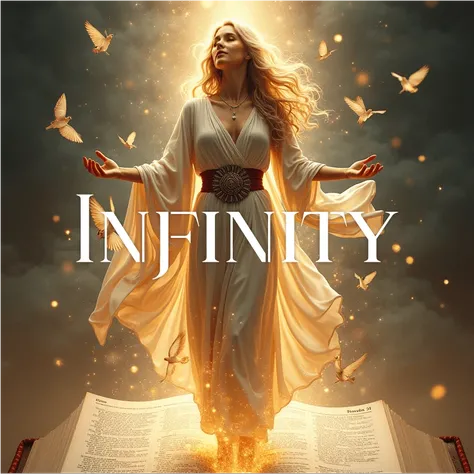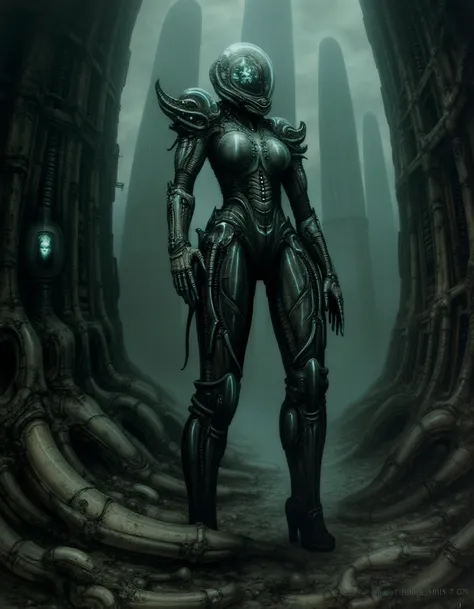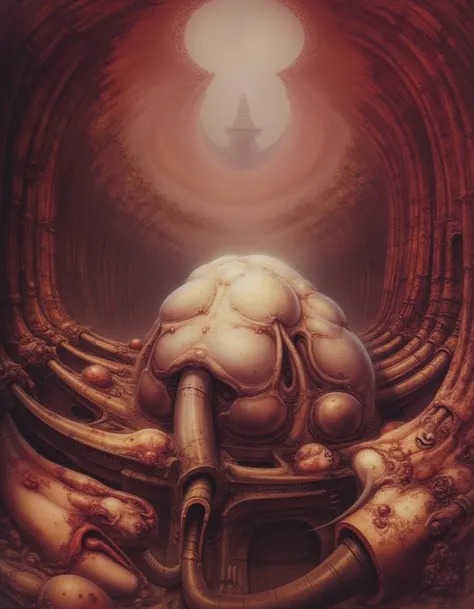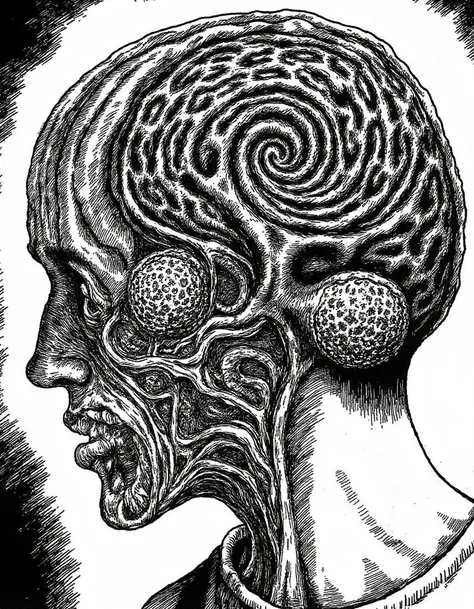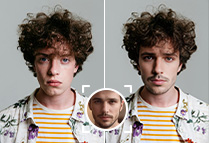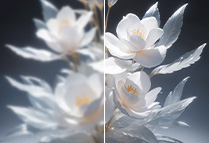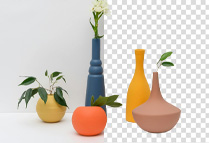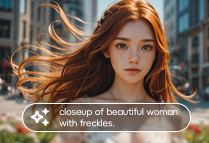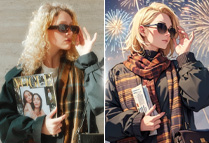Generate a highly detailed image meticulously recreating the specific biomechan
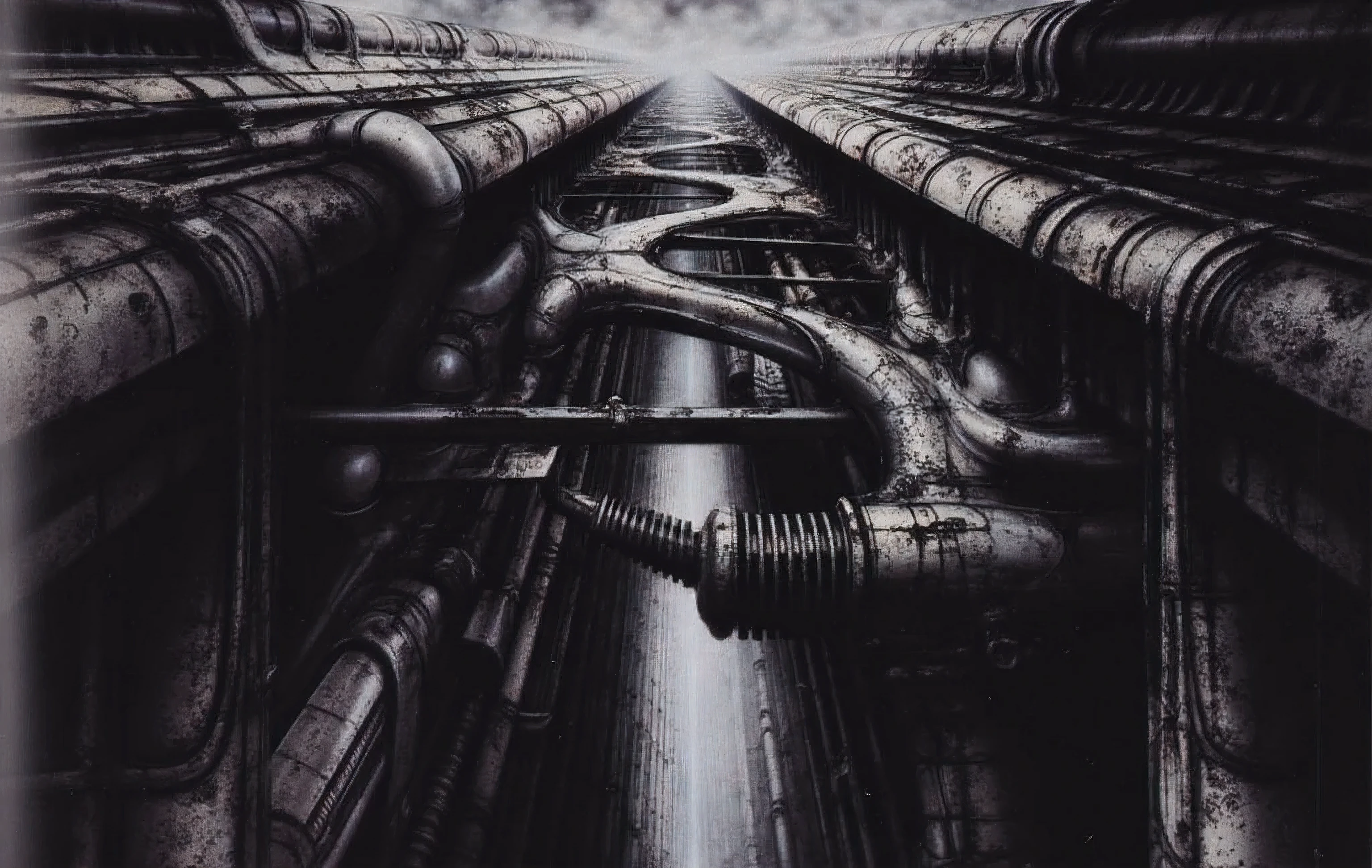
Generate a highly detailed image meticulously recreating the specific biomechanical artwork , focusing on its unique composition, atmosphere, and intricate textures in the style of H.R. Giger. Composition and Geometry - Pay strict attention to the original artwork's proportions and the geometry of its dominant structural "power lines." Accurately render the heavy, intersecting diagonal beams , the strong vertical columns, and the complex network of interwoven pipes and conduits that create overlapping layers and depth. Maintain the feeling of immense scale and verticality. Atmosphere and Lighting - Depict the scene within a confined, oppressive, and subtly dusty or hazy industrial interior space. Implement extreme high-contrast chiaroscuro lighting. Simulate harsh, directional light (as if from upper left or specific point sources) raking across surfaces, creating sharp, specular highlights on edges and textures while plunging crevices, undercuts, and background layers into deep, impenetrable shadow. Emphasize the dramatic contrast between brightly lit facets and surrounding darkness, capturing the reference's stark B&W or desaturated cool-toned look. Textures and Details - All surfaces must feature meticulous, integrated mechanistic and biomechanical texturing, avoiding any smooth or simplistic areas. Explicitly incorporate the following specific texture patterns, making them integral to the structure's forms - Dense Arrays of Parallel Ribbed Conduits - Fine, tightly packed, parallel lines/tubes (Reference - `parallel_ribbed_conduits_texture`). Interlocking Segmented Chains - Mechanical vertebrae or articulated joint patterns (Reference - `segmented_chain_texture`). Directional Lines and Curves: The lines and curves of the tubes, pipes, and organic shapes guide the viewer's eye through the composition. Use DARK BLACK COLORS, symmetrical, perfect, allegory of sin,evil, darkness, big painting, stored in Louvre
提示词
复制
Generate a highly detailed image meticulously recreating the specific biomechanical artwork , focusing on its unique composition, atmosphere, and intricate textures in the style of H.R. Giger.
Composition and Geometry -
Pay strict attention to the original artwork's proportions and the geometry of its dominant structural "power lines." Accurately render the heavy, intersecting diagonal beams , the strong vertical columns, and the complex network of interwoven pipes and conduits that create overlapping layers and depth. Maintain the feeling of immense scale and verticality.
Atmosphere and Lighting -
Depict the scene within a confined, oppressive, and subtly dusty or hazy industrial interior space. Implement extreme high-contrast chiaroscuro lighting. Simulate harsh, directional light (as if from upper left or specific point sources) raking across surfaces, creating sharp, specular highlights on edges and textures while plunging crevices, undercuts, and background layers into deep, impenetrable shadow. Emphasize the dramatic contrast between brightly lit facets and surrounding darkness, capturing the reference's stark B&W or desaturated cool-toned look.
Textures and Details -
All surfaces must feature meticulous, integrated mechanistic and biomechanical texturing, avoiding any smooth or simplistic areas. Explicitly incorporate the following specific texture patterns, making them integral to the structure's forms -
Dense Arrays of Parallel Ribbed Conduits - Fine, tightly packed, parallel lines/tubes (Reference - `parallel_ribbed_conduits_texture`).
Interlocking Segmented Chains - Mechanical vertebrae or articulated joint patterns (Reference - `segmented_chain_texture`).
Directional Lines and Curves: The lines and curves of the tubes, pipes, and organic shapes guide the viewer's eye through the composition.
Use DARK BLACK COLORS, symmetrical, perfect, allegory of sin,evil, darkness, big painting, stored in Louvre
信息
模型 & 风格
共 0 条评论
0
0
